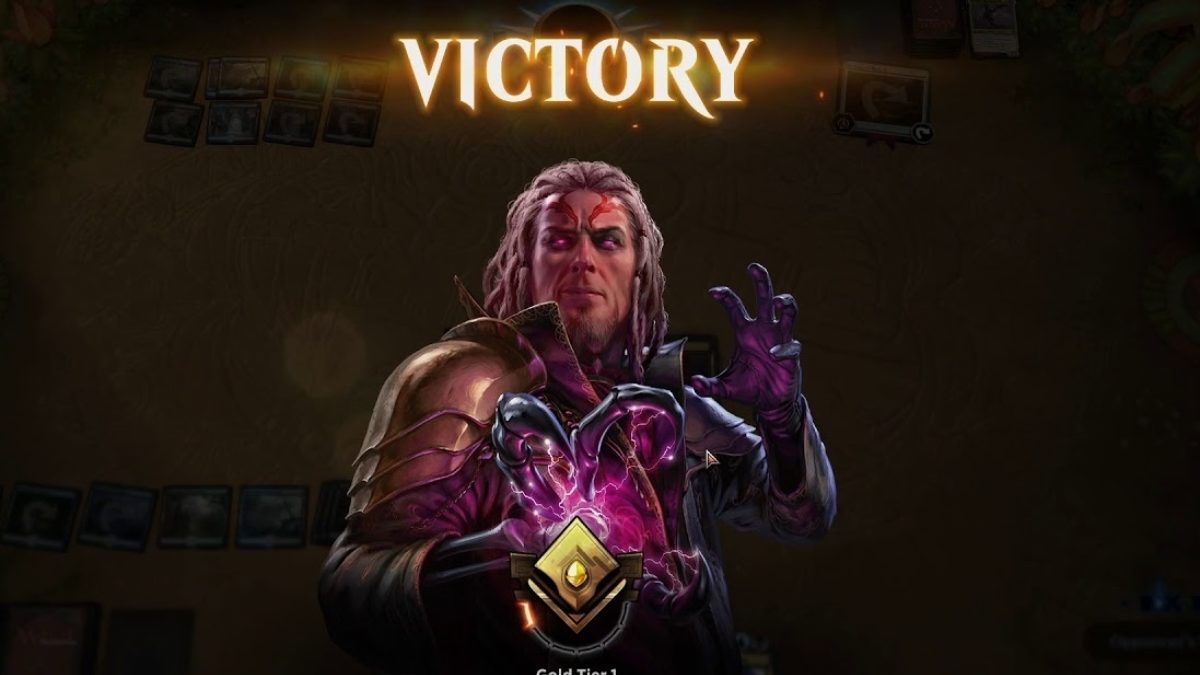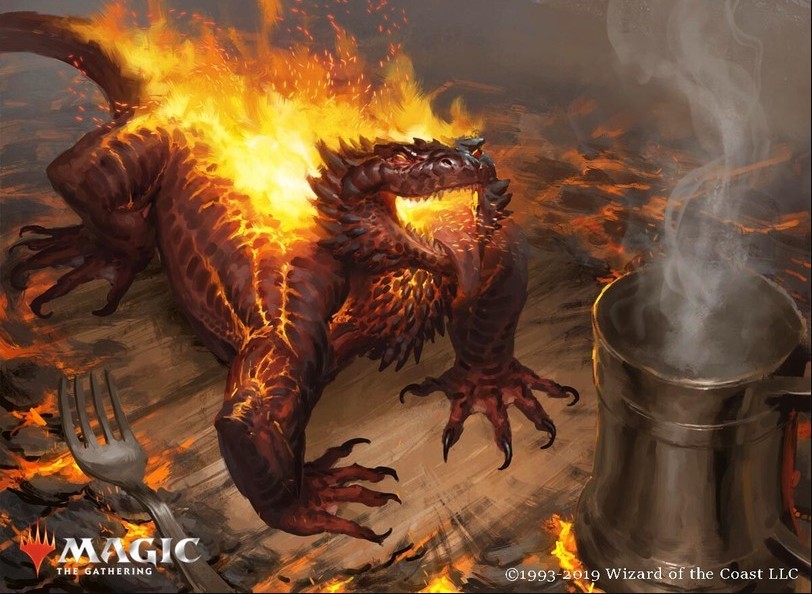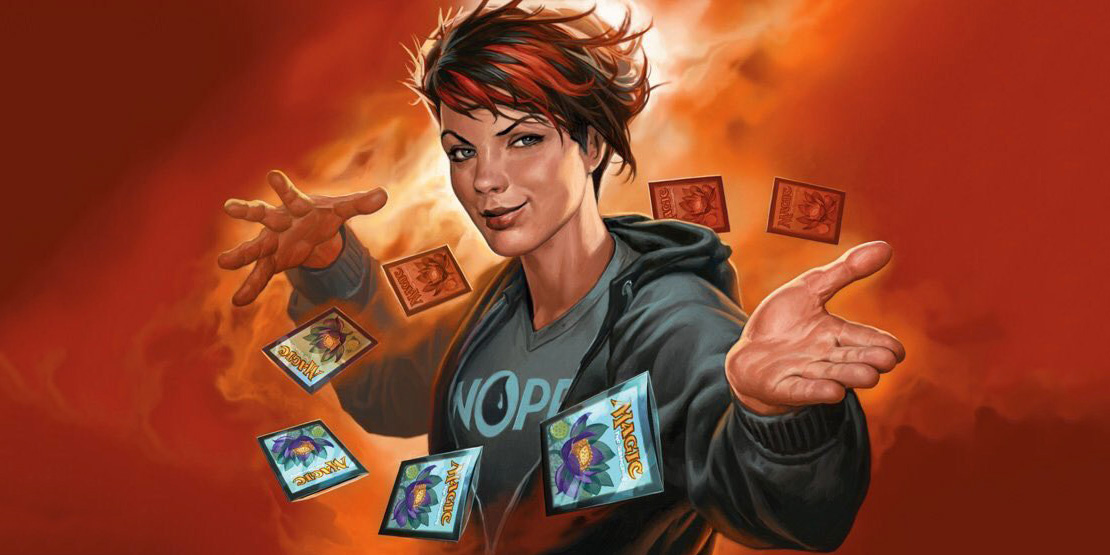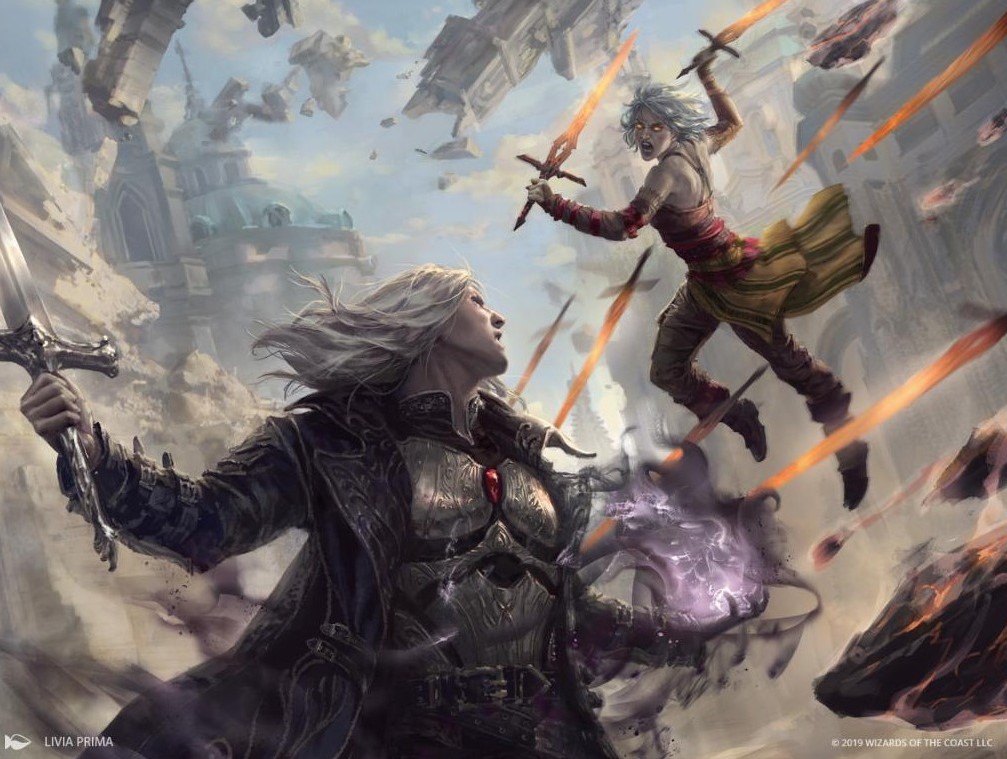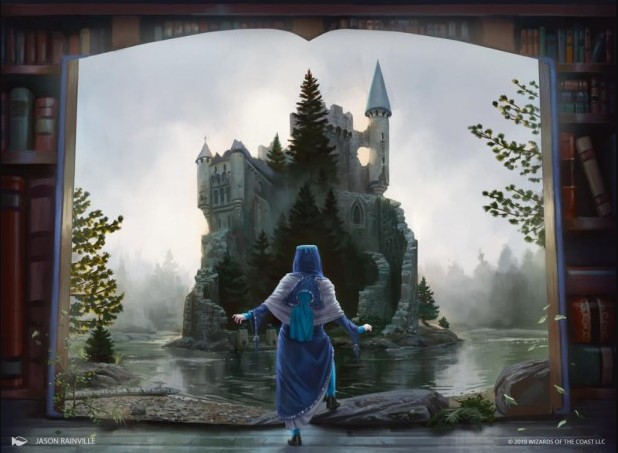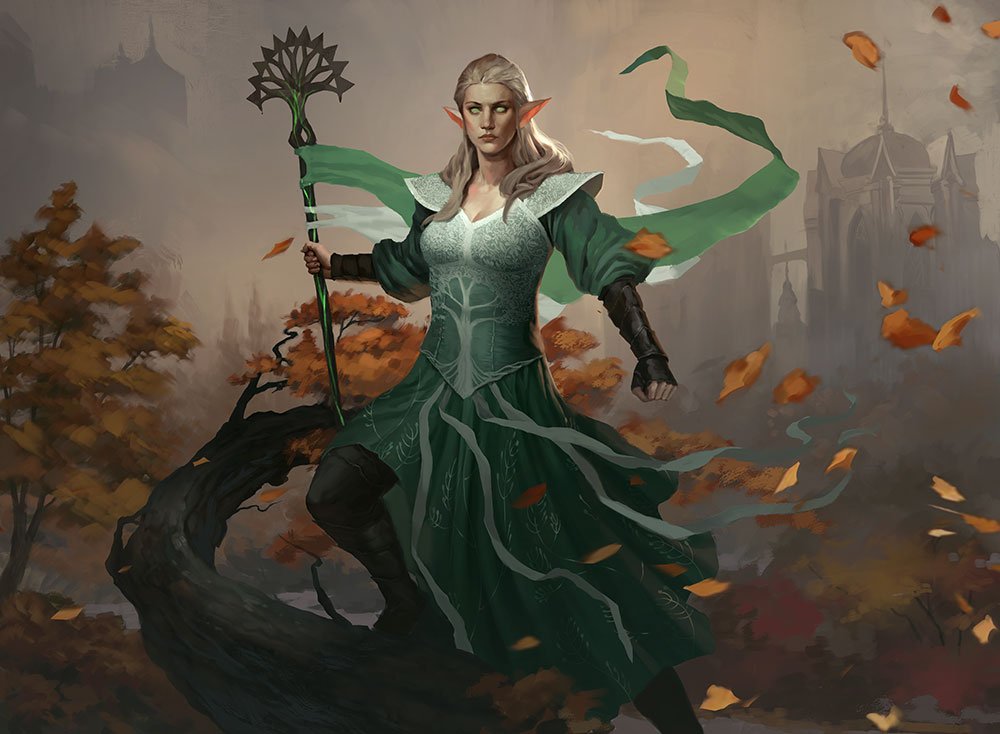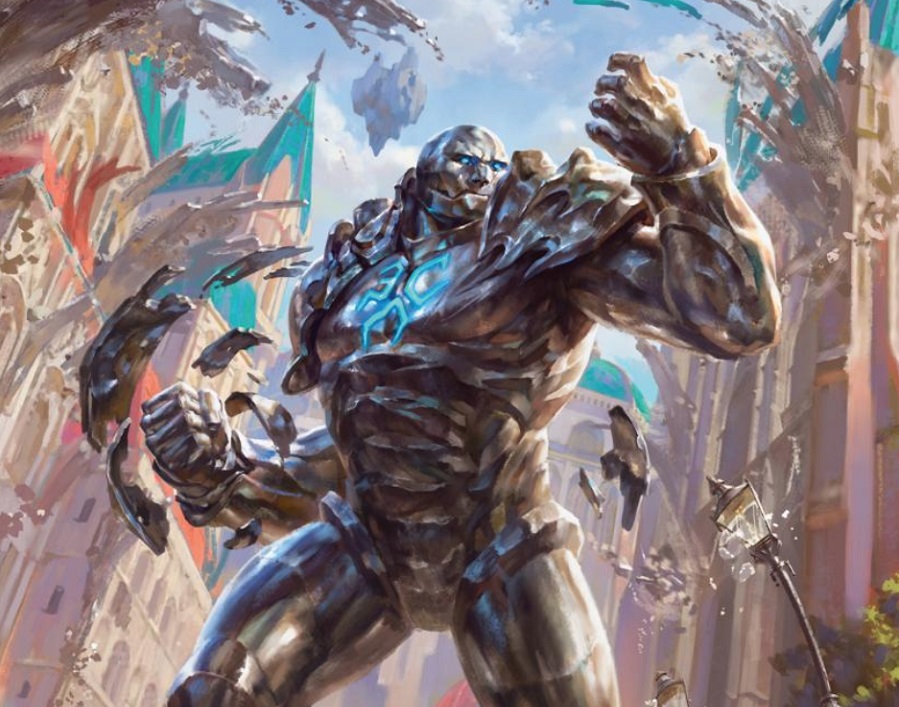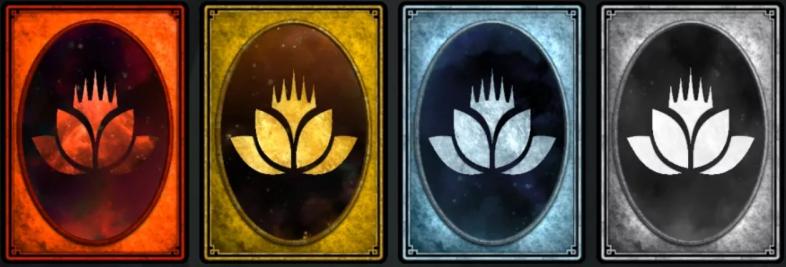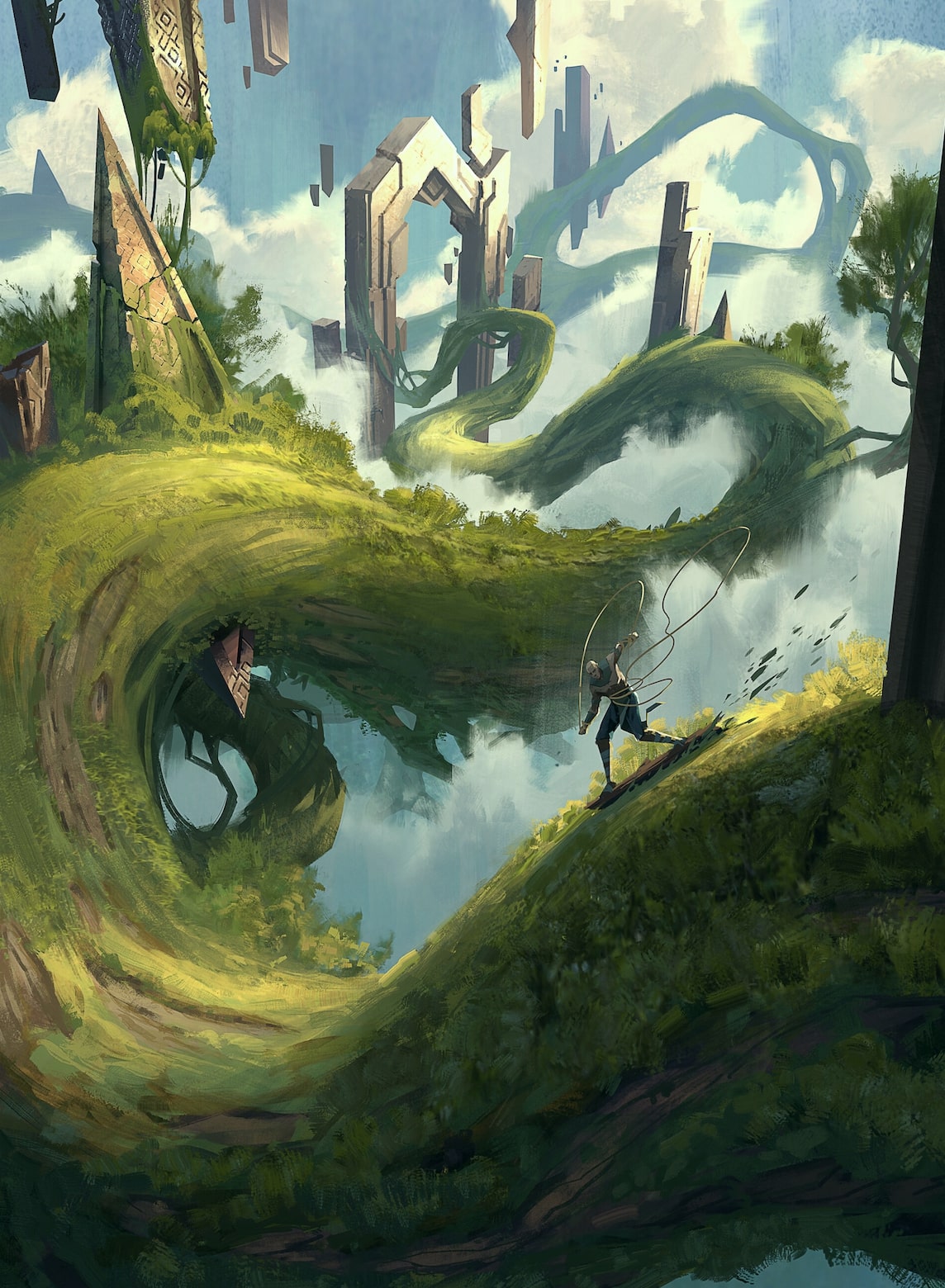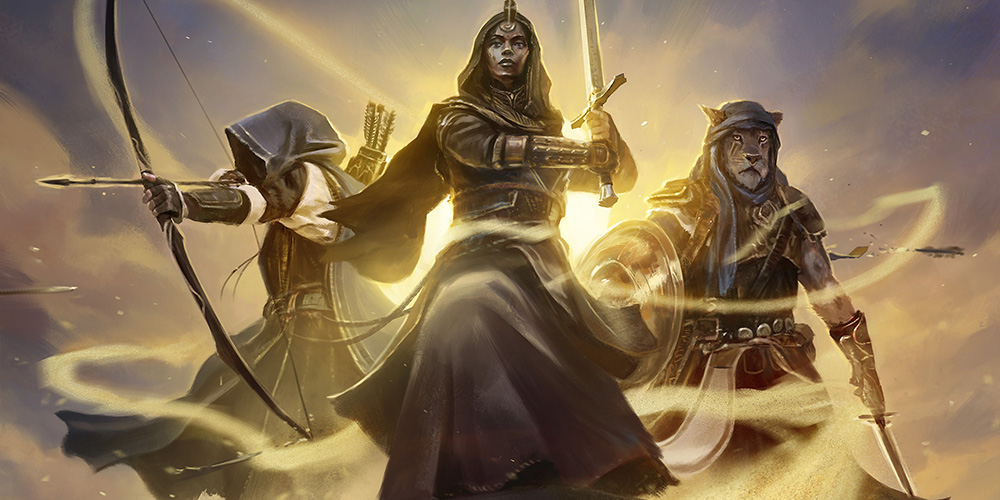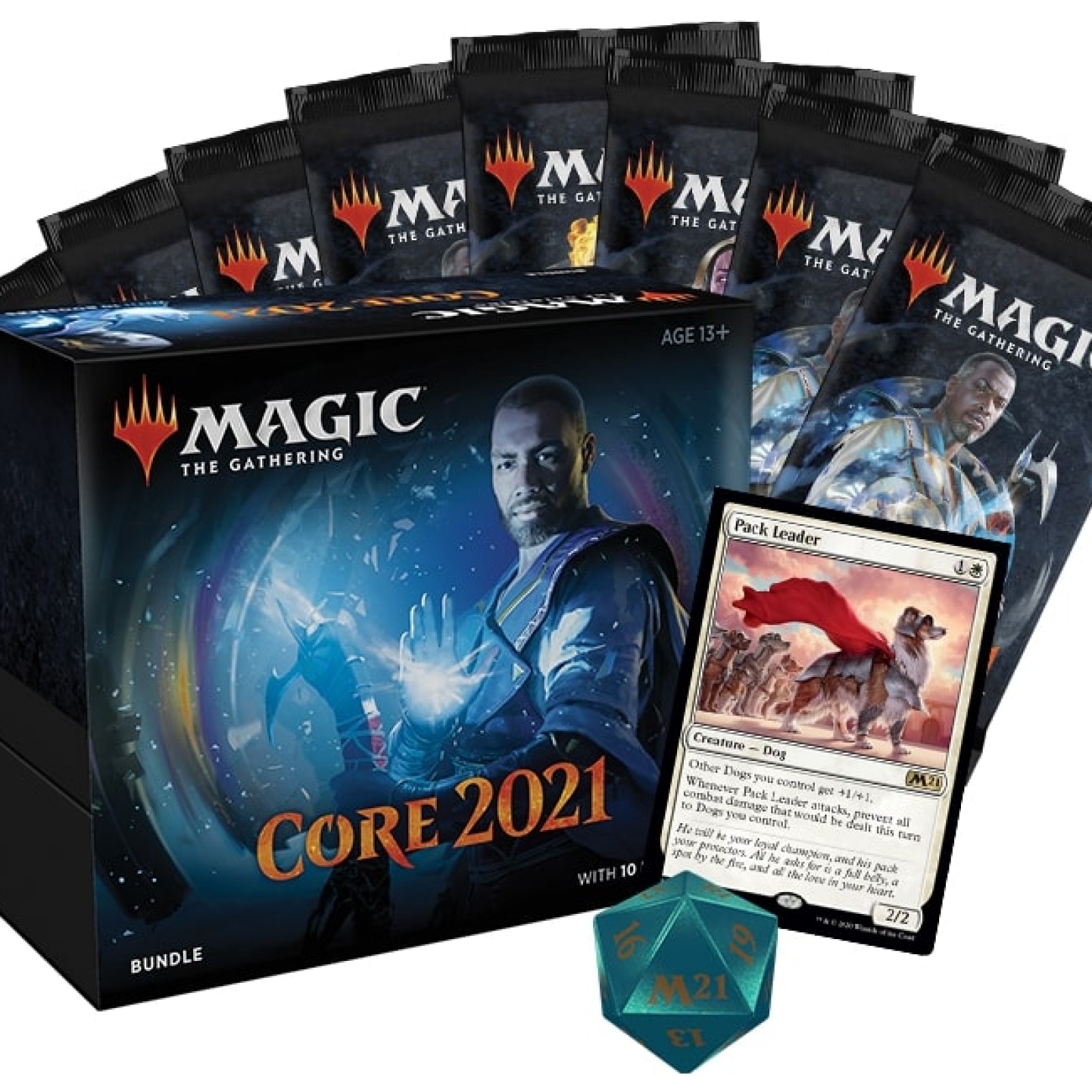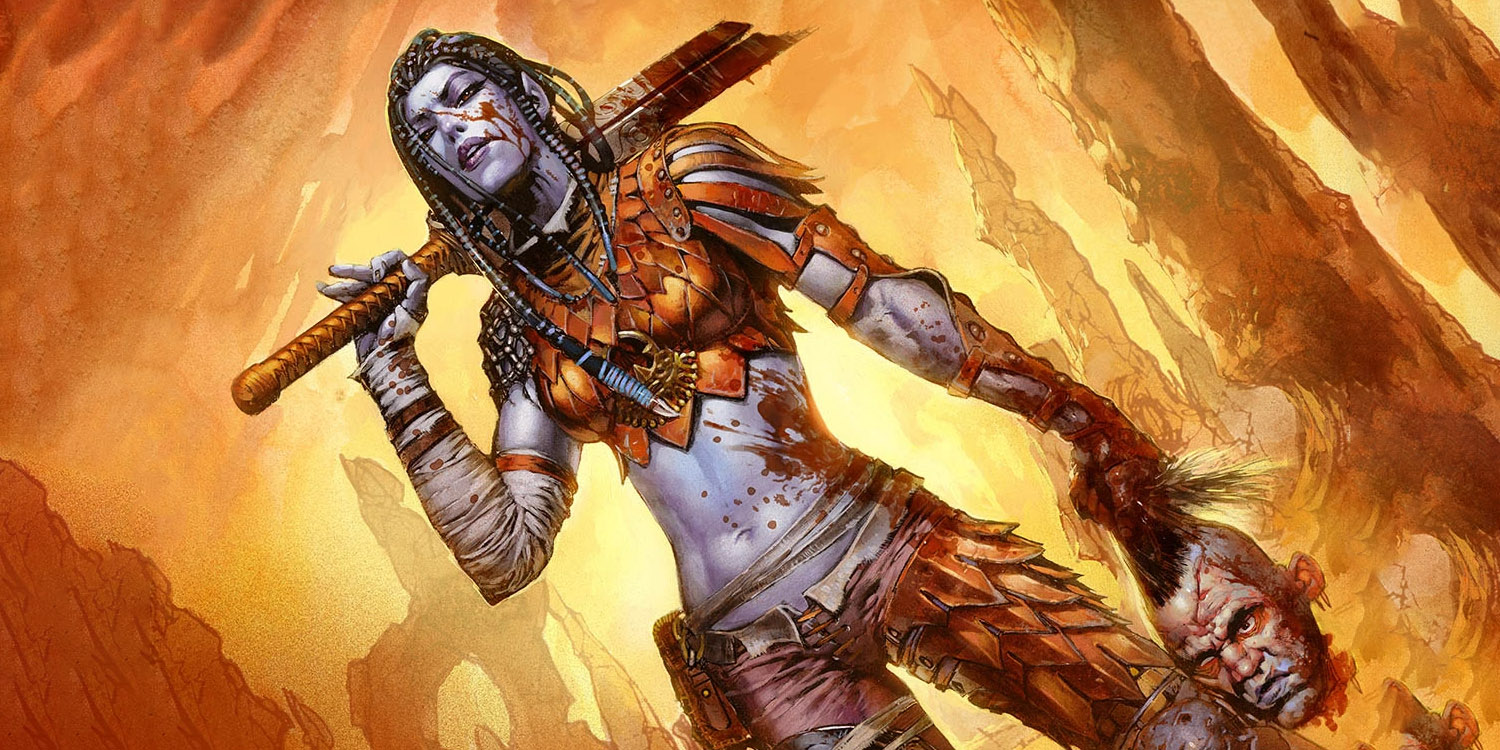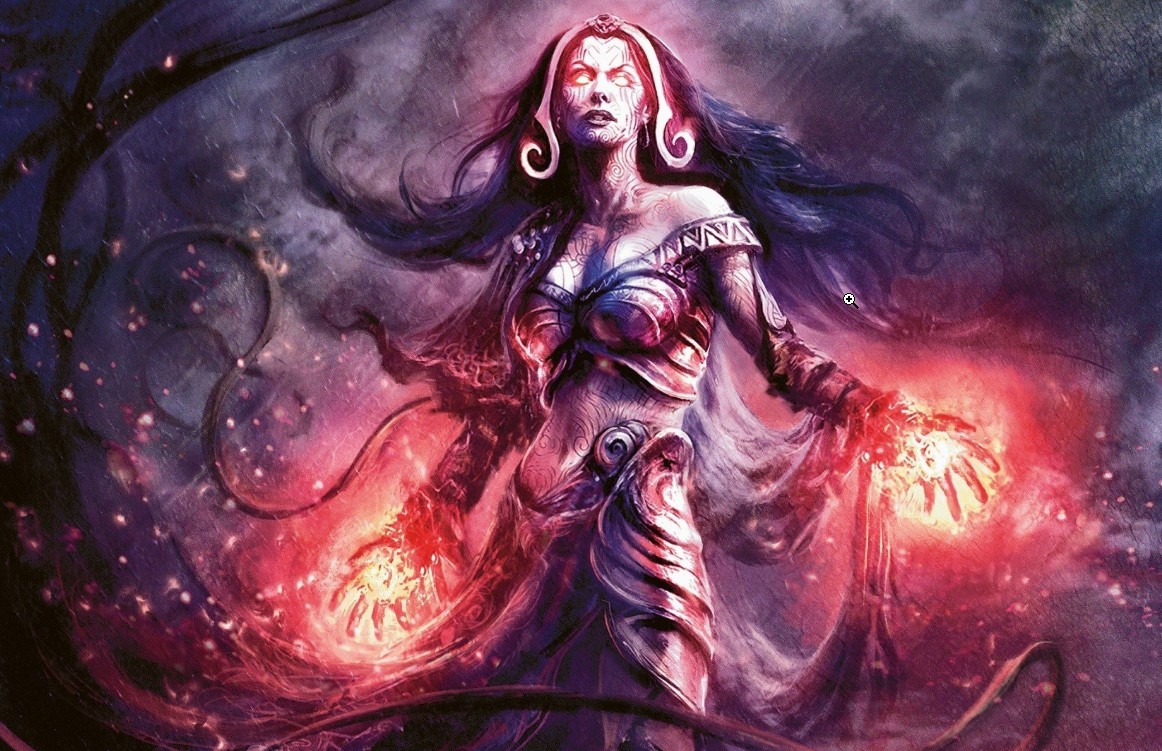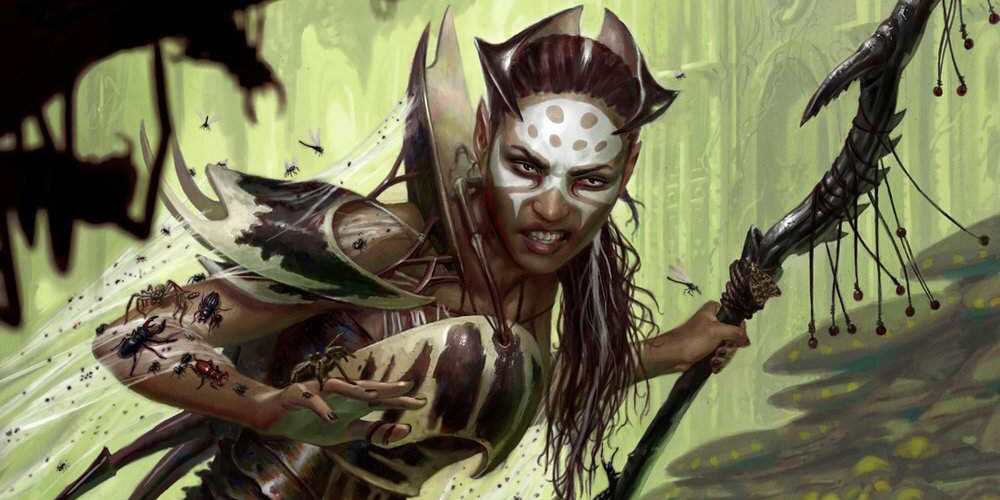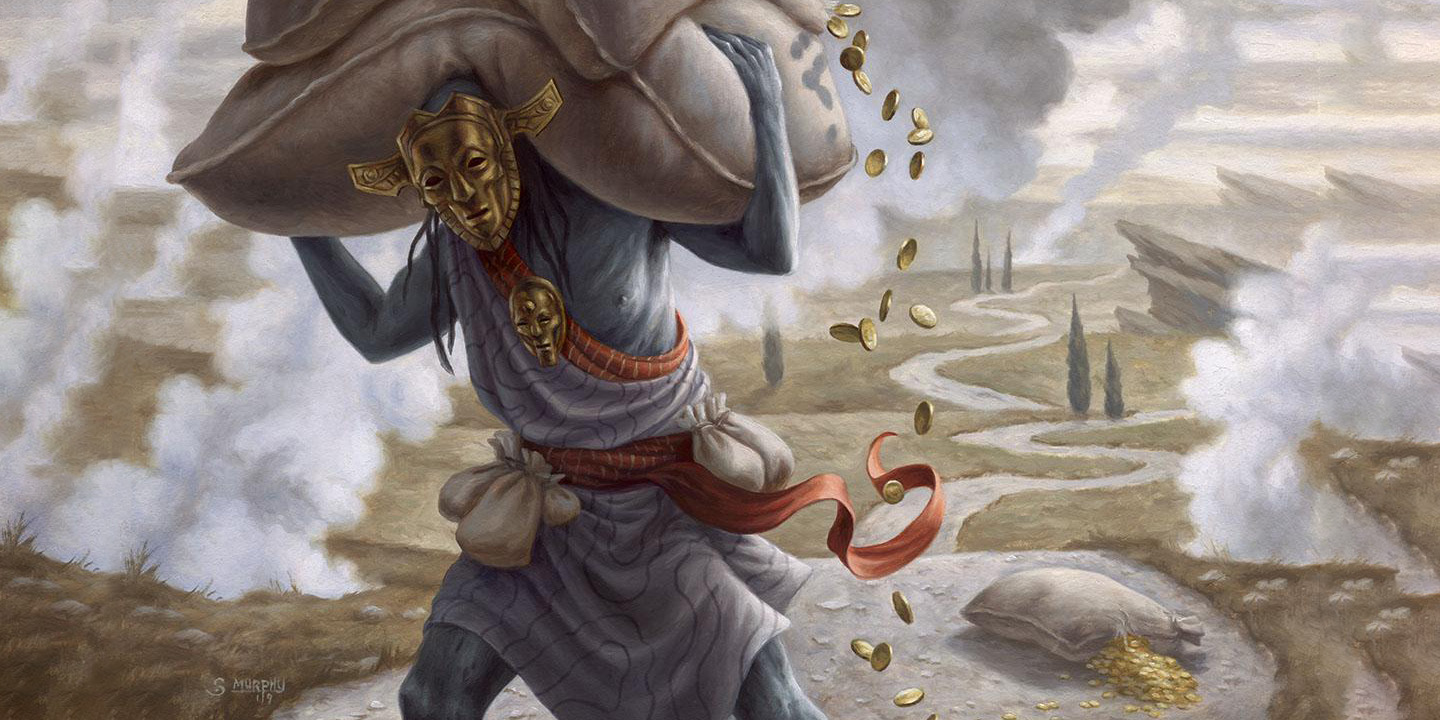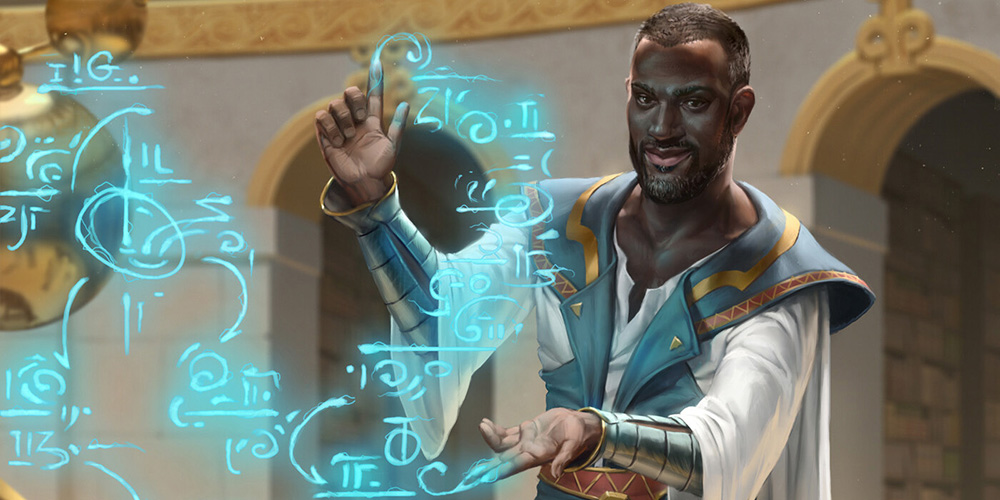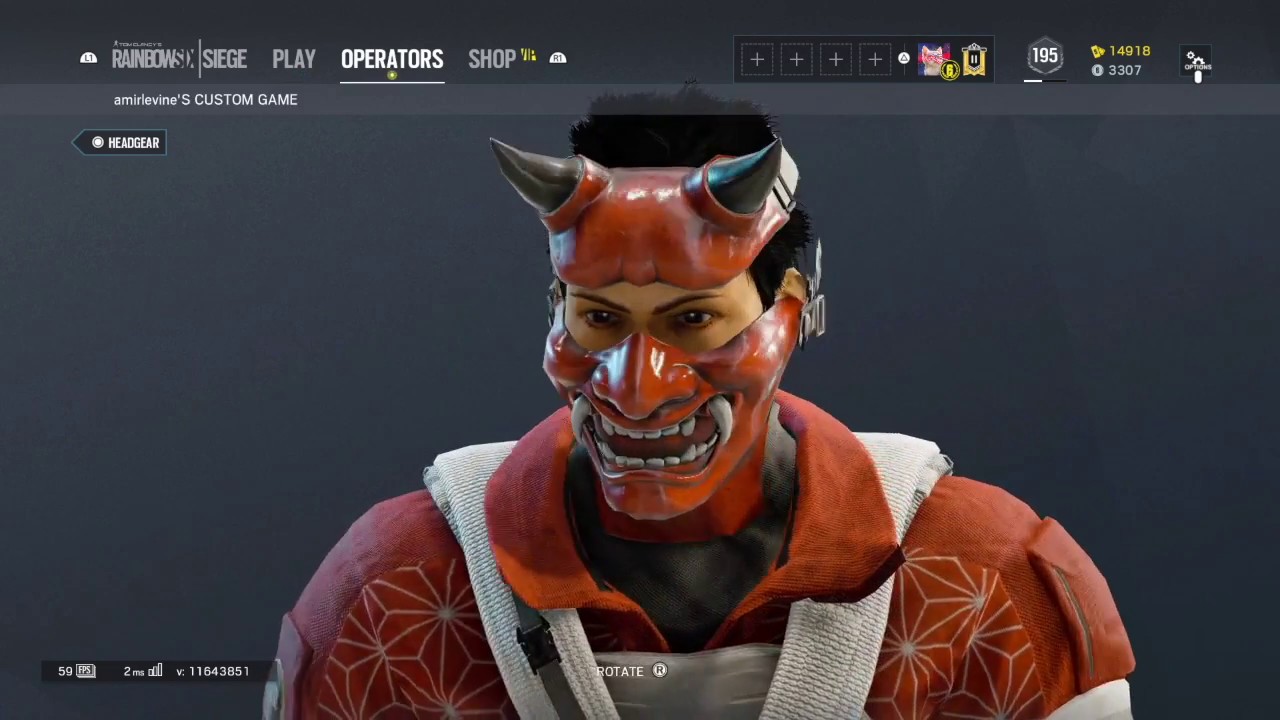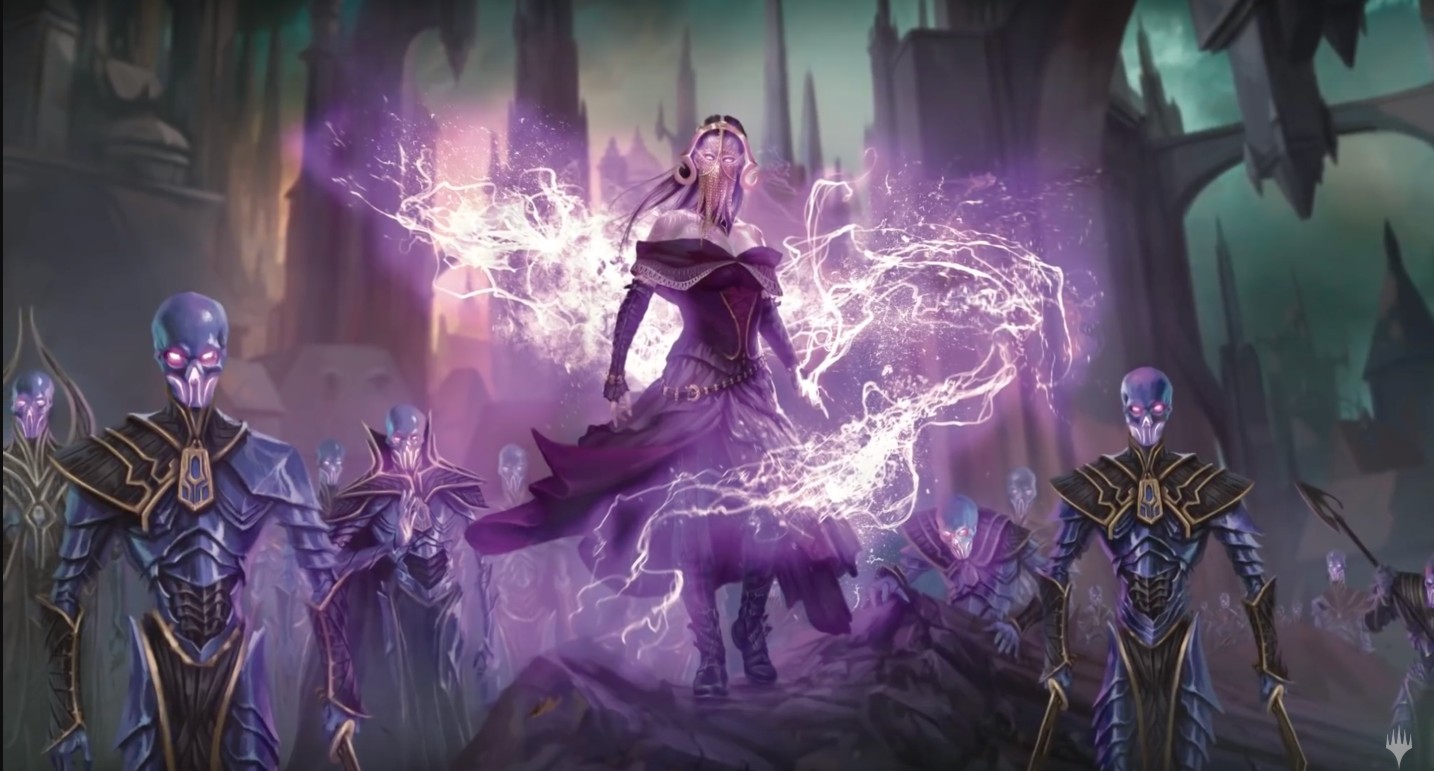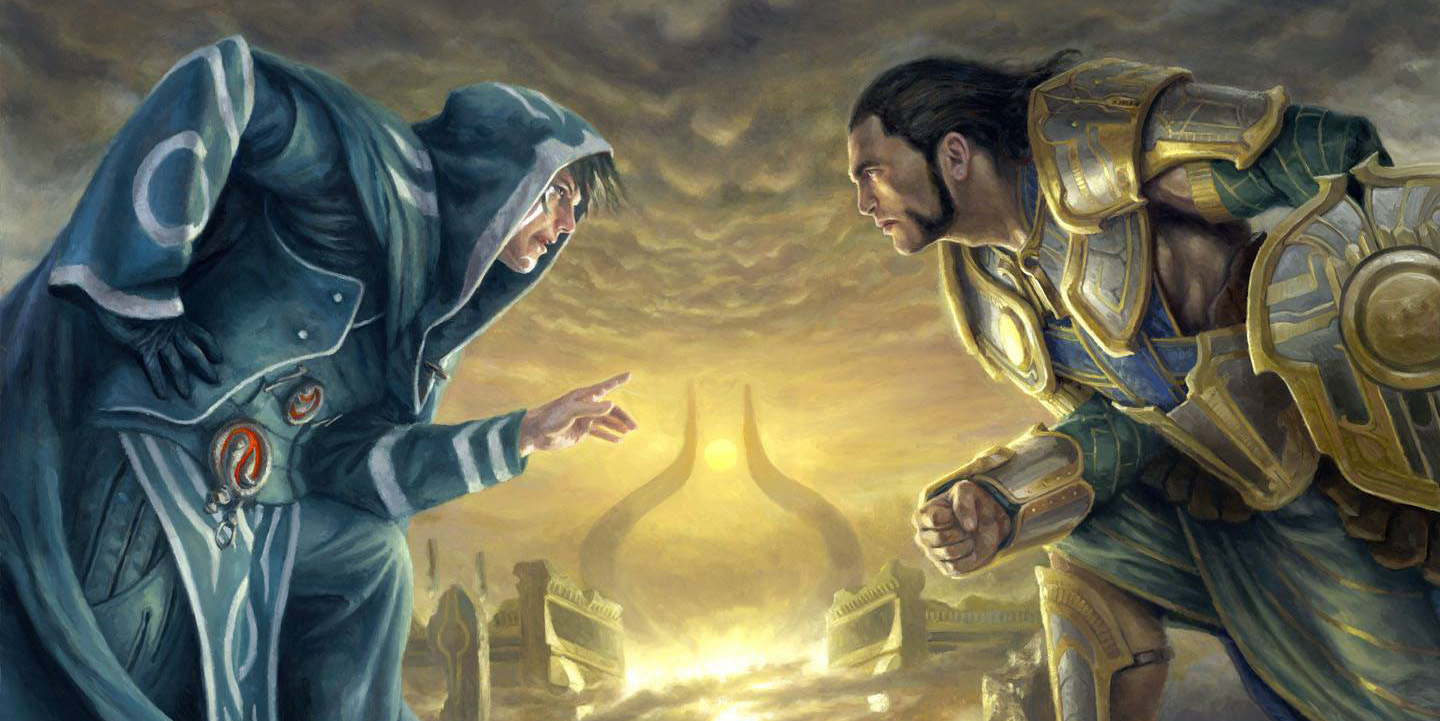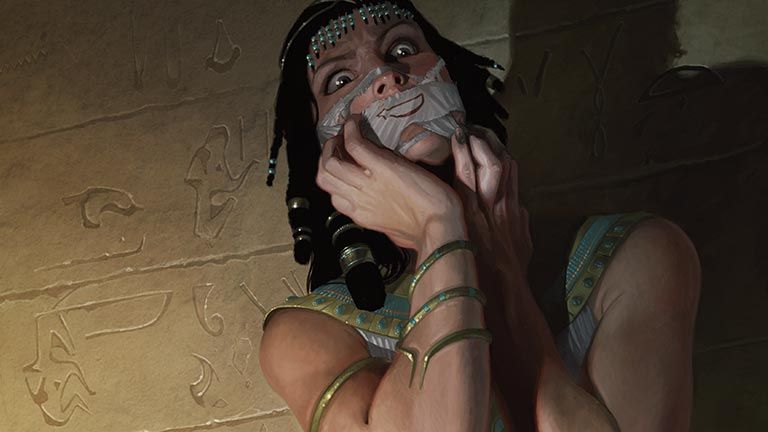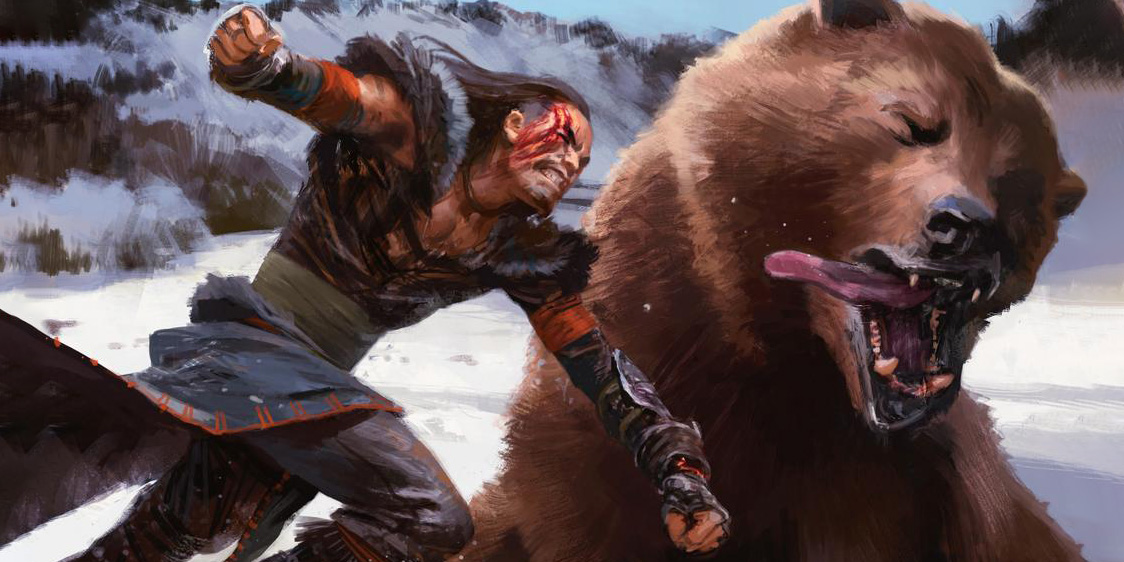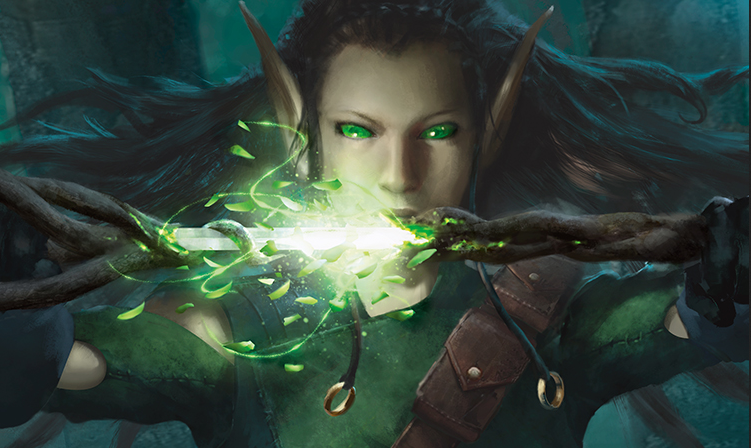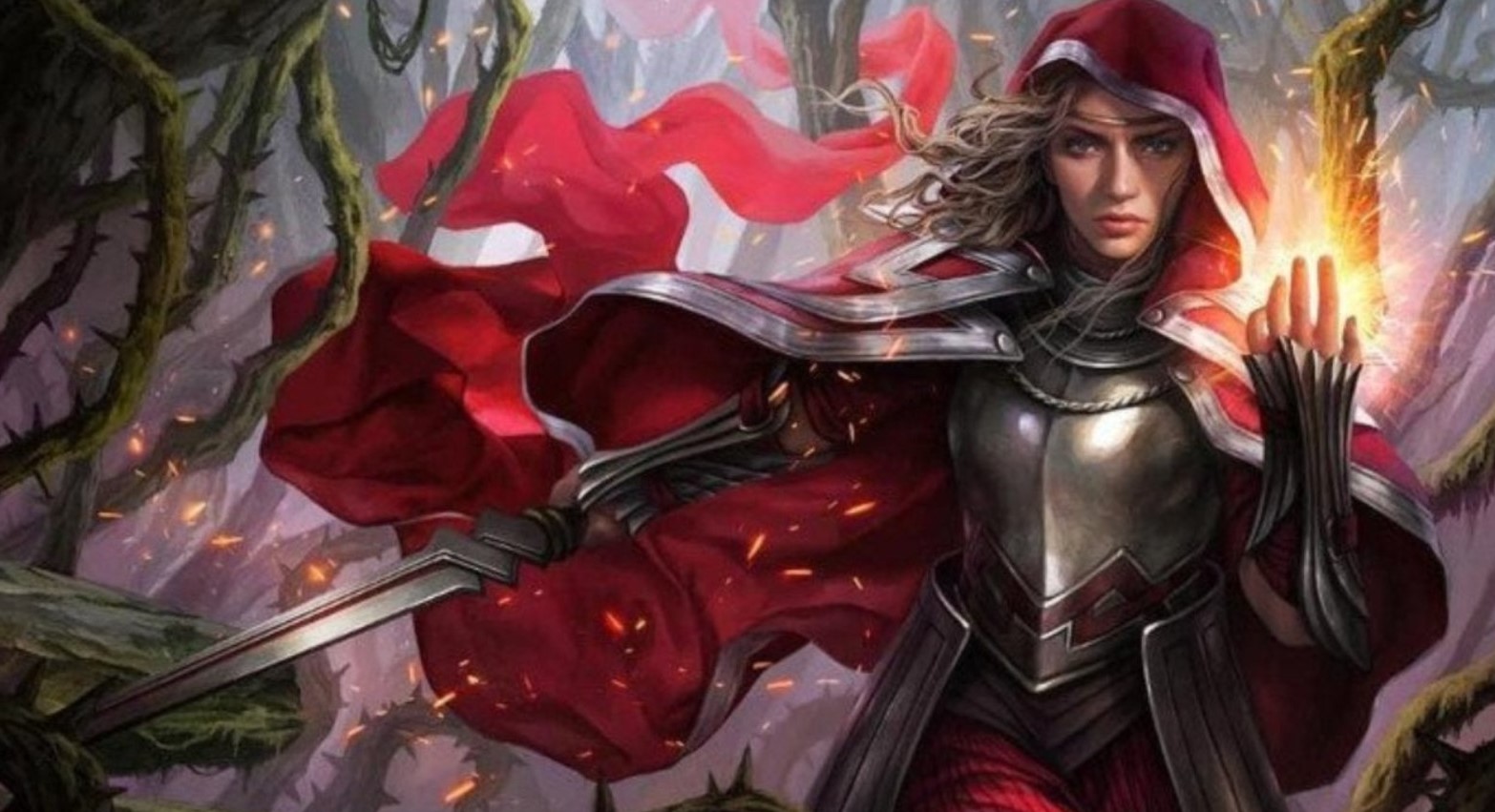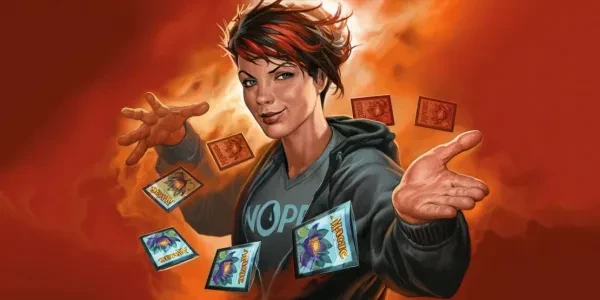
Hard-fought battles are nice but easy wins are the best.
On the 3rd of August, Wizards of the Coast dropped the ban hammer on three major cards used by the best decks in Standard along with that annoying black cat. Want to know what strategies can take advantage of the shake-up in the metagame? Here are 10 decks you can use to crush your enemies on your way to Mythic rank in MTG Arena.
10. Dimir Flash
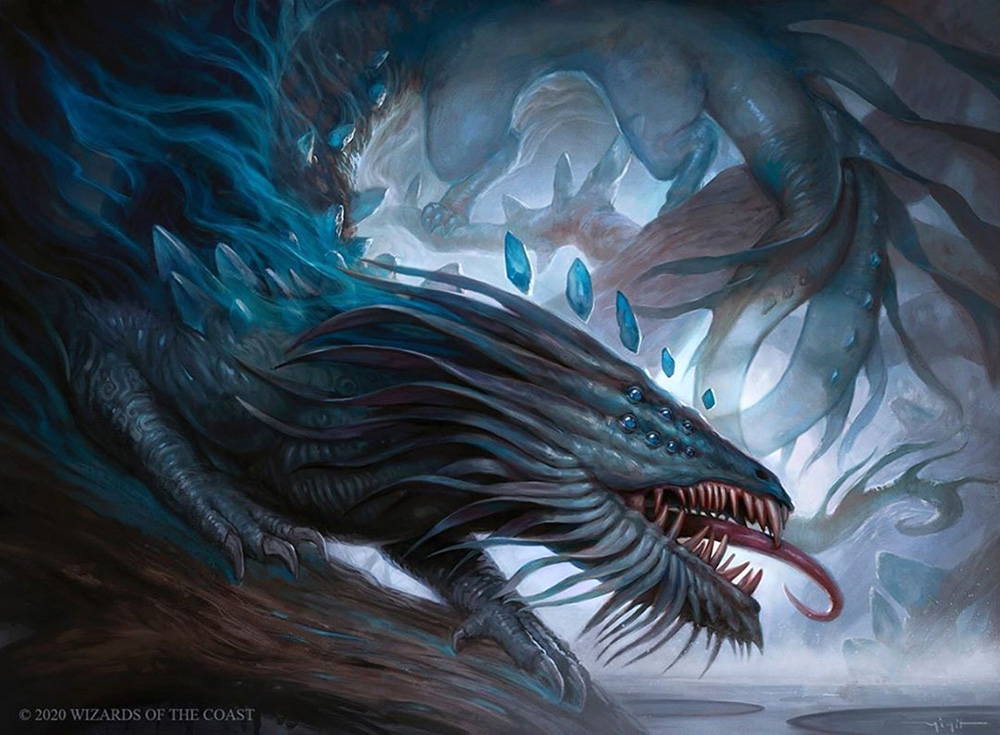
Imagine this nightmare appearing in front of you out of nowhere.
Now that Teferi's banned, Dimir Flash is a viable deck again. Your goal is to use small creatures to chip away an opponent’s life total while disrupting them. Every card except for Gadwick, the Wizened can be cast at instant speed, giving you many opportunities to outplay your opponent.
What's good about this deck:
- Your cards' synergy makes the deck more powerful than the sum of its parts. Brineborn Cutthroat and Slitherwisp turn your ordinary flash creatures into value-generating threats.
- Unlike in other decks, here you can use Gadwick's second ability to its full potential. You have plenty of cheap blue spells to trigger his tapping ability and make it difficult for your opponent to attack or block.
- It puts the fear of the unknown on your opponent. They always have to worry about surprise blockers or creatures coming out of nowhere and attacking them for lethal.
- You often win in close races, so this deck rewards tight play. It also frustrates players who are not good at reading their opponent's hand.
How to play this deck effectively:
- Unless you’re ambushing an attacker, wait until the end of your opponent’s turn to cast your creatures. You want them to have the least opportunity to kill your creature before you can attack with it.
- Play Brineborn Cutthroat early to give it the best chance to grow into a huge threat. Once it's on the battlefield, protect it with your counterspells and removal.
- Cast your Slitherwisp with mana left over to cast a couple of your cheap flash spells. This lets you at least get some value if they immediately kill it.
- Use Brazen Borrower as temporary removal to gain tempo when racing against creature decks. Against control, don't hesitate to cast it early as a regular creature to pressure your opponent.
- When your opponent casts a spell, always respond as if you’re holding a counterspell by pausing for a moment before letting it resolve. Making your opponent play around cards you don’t have can make a difference in a close match.
- Casting Gadwick early against aggressive decks is the right play. His tap ability makes a huge difference in your ability to control the board.
Cards:
Deck
4 Thieves' Guild Enforcer
3 Spectral Sailor
4 Blacklance Paragon
4 Brineborn Cutthroat
2 Cunning Nightbonder
4 Brazen Borrower
4 Slitherwisp
3 Gadwick, the Wizened
2 Whisper Agent
2 Disfigure
2 Heartless Act
2 Drown in the Loch
4 Temple of Deceit
4 Watery Grave
1 Castle Locthwain
1 Castle Vantress
1 Fabled Passage
7 Swamp
6 Island
9. Mono-White Lifegain
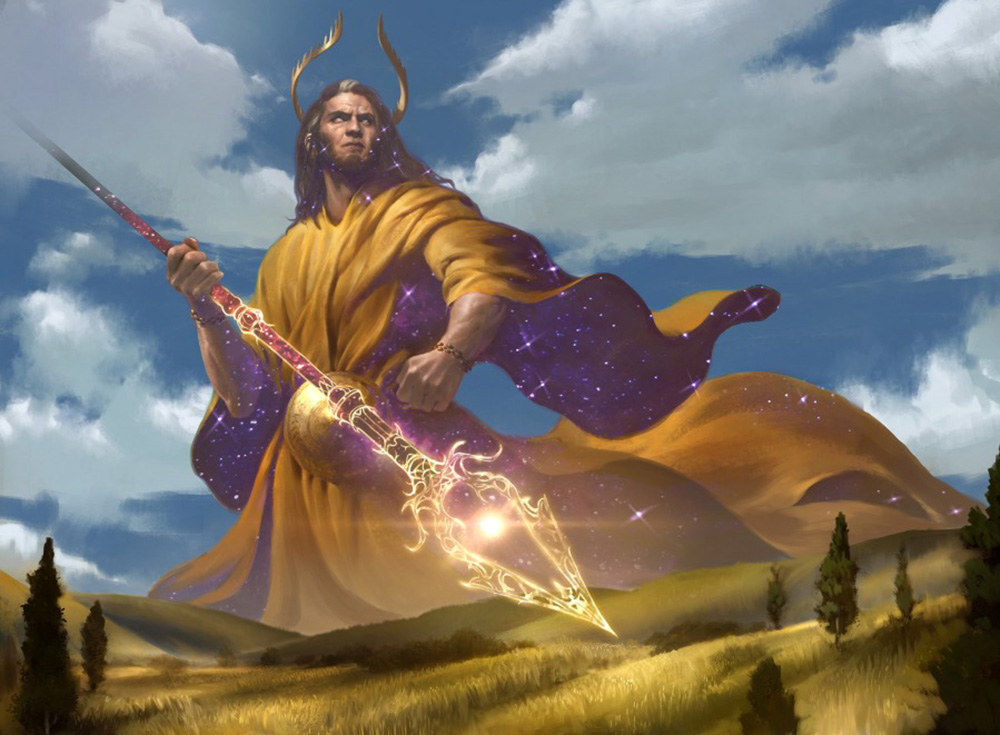
Heliod only joins the action after you’ve given him enough devotion.
Mono-White Lifegain uses Heliod, Sun-Crowned's ability to grow Lifelink attackers after each combat. You then have a couple of creatures you can sacrifice to protect your best threats. Lurrus of the Dream-Den lets you bring back those protection creatures while also being a Lifelink attacker.
What's good about this deck:
- It has a great matchup against other aggressive decks. Because you also gain life while you attack, they have to inflict at least twice as much damage to you to keep pace.
- Protection creatures guarantee that you come out ahead during creature combat. It also makes your best threats difficult to kill.
- Your creatures have cheap mana costs so you can play them before control decks have enough mana for counterspells. Castle Ardenvale gives you a source of creatures that's uncounterable and hard to remove.
How to play this deck effectively:
- Your best hand consists of a one-mana creature, Ajani's Pridemate, Heliod, and a protection creature.
- Lead with Healer’s Hawk instead of your other one-mana creatures because the opponent is less likely to have a blocker for it on Turn 2.
- Play your Ajani’s Pridemate early so it has the best chance to grow into a huge threat. The same principle applies to your Lifelink creatures if you already have Heliod on the board.
- Always keep mana open to activate Alseid of Life’s Bounty at any time. This makes it difficult for your opponent to line up their removal against your creatures.
- When you get several triggers from Heliod, distribute them depending on the type of removal you expect. Spread it around against target removal or put it on a creature you can protect if they have mass removal.
Cards:
Deck
4 Healer's Hawk
4 Alseid of Life's Bounty
4 Selfless Savior
2 Speaker of the Heavens
4 Ajani's Pridemate
4 Daxos, Blessed by the Sun
4 Heliod, Sun-Crowned
3 Linden, the Steadfast Queen
2 Lurrus of the Dream-Den
2 Ajani, Strength of the Pride
4 Glass Casket
3 Castle Ardenvale
20 Plains
8. Orzhov Yorion Control
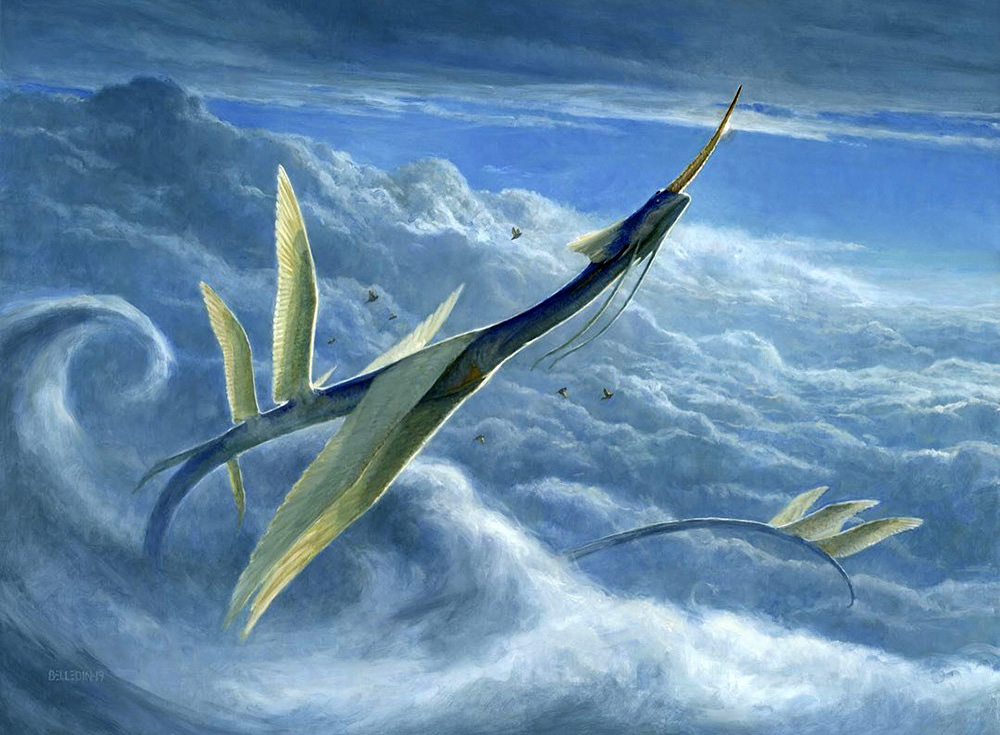
Yorion soars through the clouds before going down to use his ability.
Orzhov Yorion uses permanents with Enters the Battlefield abilities that give you extra value. You have cards that provide discard, removal, card draw, or life gain depending on what's needed. On later turns, you can use these permanents to fuel Doom Foretold or reuse them with Yorion, Sky Nomad.
What's good about this deck:
- You have no problem taking on aggressive decks. Mass removal and life gain help you survive into the late game where they will run out of resources eventually.
- The sheer value Yorion provides can overpower other value-oriented decks. Even control decks that fail to prevent it from using its Enters the Battlefield ability can lose.
- Your two-mana rats will force your opponent to make difficult decisions on what to discard or exile. They can't afford to sandbag their best cards because they risk losing them.
How to play this deck effectively:
- Your best hand consists of a two-mana rat, Treacherous Blessing, and Doom Foretold. Mulligan away hands that don’t have early plays.
- Make sure you have several permanents you can sacrifice before playing Doom Foretold. You'll gain a huge advantage if you can make your opponent sacrifice permanents for several turns.
- You can trigger an Enter the Battlefield loop that nets you value each time using Charming Prince and Yorion. Use the Prince's ability to exile Yorion, then during the end step, use Yorion to exile the Prince and all your other permanents.
- Playing Treacherous Blessing when facing aggressive decks is a double-edged sword. Make sure you have a plan to get rid of it immediately after you’ve played it.
- Kaya, Orzhov Usurper's minus one ability can get rid of creatures that cost zero mana as well. This is relevant for exiling token creatures like the ones created by Shark Typhoon.
Cards:
Companion
1 Yorion, Sky Nomad
Deck
4 Burglar Rat
4 Yarok's Fenlurker
4 Charming Prince
3 Yorion, Sky Nomad
4 Omen of the Sun
3 Glass Casket
4 Treacherous Blessing
4 Oath of Kaya
4 Doom Foretold
3 Elspeth Conquers Death
2 Kaya, Orzhov Usurper
1 Elspeth, Sun's Nemesis
4 Kaya's Wrath
4 Indatha Triome
4 Temple of Silence
4 Godless Shrine
4 Fabled Passage
3 Castle Locthwain
1 Castle Ardenvale
9 Swamp
7 Plains
Sideboard
1 Yorion, Sky Nomad
7. Gruul Adventures
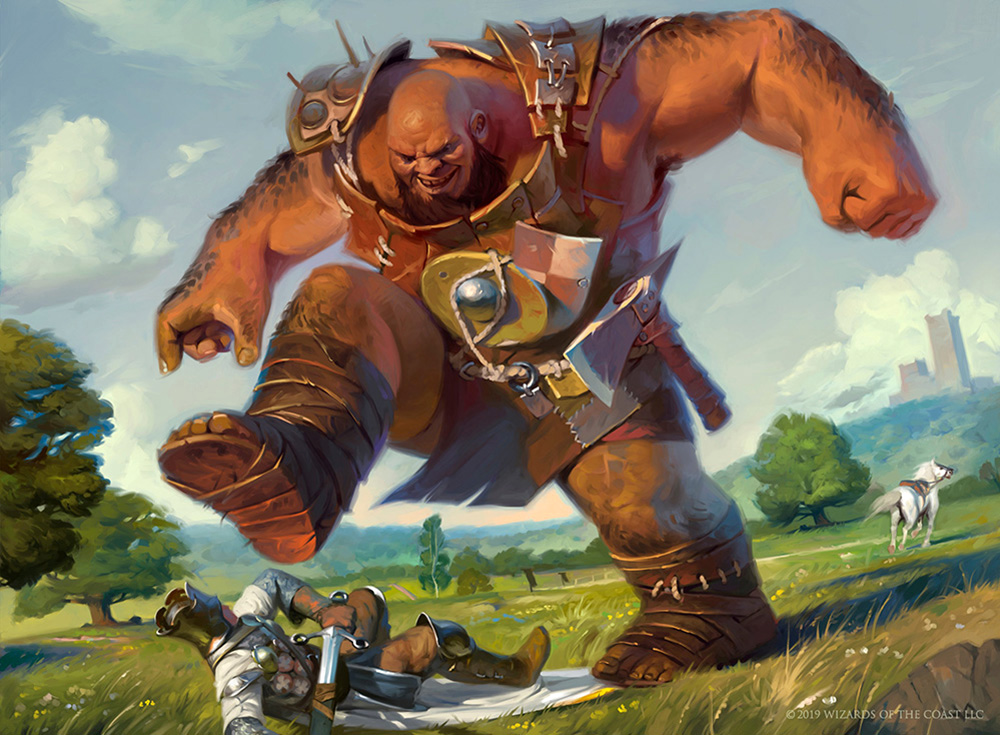
An accurate depiction of what you'll do to a deck filled with small creatures.
Gruul Adventures smashes your opponent with all the best green and red bruisers up the mana curve. Embercleave lets you double the damage of your biggest attacker in an instant. The Adventure package gives you more gas compared to regular Gruul Aggro builds.
What's good about this deck:
- You get both power and card advantage from your Adventure creatures. Not only do they have excellent power to mana cost ratio, but they also draw cards thanks to Edgewall Innkeeper.
- Compared to other aggro decks, Gruul Adventures mulligans well. Your Adventure creatures have built-in two-for-ones to offset the card disadvantage.
- The threat of Embercleave forces your opponent to make awkward choices when blocking or casting removal. For example, they need to cast removal on Gruul Spellbreaker during their turn or they risk taking tons of damage from it if it gets equipped.
How to play this deck effectively:
- Your best hand consists of Edgewall Innkeeper, a couple of Adventure creatures, and Embercleave.
- Mulligan away hands that don't have early game creatures. You need to play threats going up the mana curve every turn.
- Don't attack with Edgewall Innkeeper if your opponent's deck has cards that can ambush it. For example, Winota decks have Raise the Alarm while ramp decks with blue might have Shark Typhoon.
- You don't always have to equip Embercleave on your biggest creature. Equipping Rimrock Knight lets you attack through small blockers. Choosing Gruul Spellbreaker protects you from getting blown out by removal.
- You don't need to commit many creatures to the board when playing against control. Your creatures have high power so two creatures are enough to force your opponent to cast mass removal.
Cards:
Deck
4 Edgewall Innkeeper
4 Pelt Collector
4 Rimrock Knight
3 Paradise Druid
4 Bonecrusher Giant
4 Lovestruck Beast
3 Gruul Spellbreaker
4 Questing Beast
4 Embercleave
2 Domri's Ambush
4 Stomping Ground
2 Fabled Passage
2 Castle Embereth
9 Forest
7 Mountain
6. Mono-Black Aggro
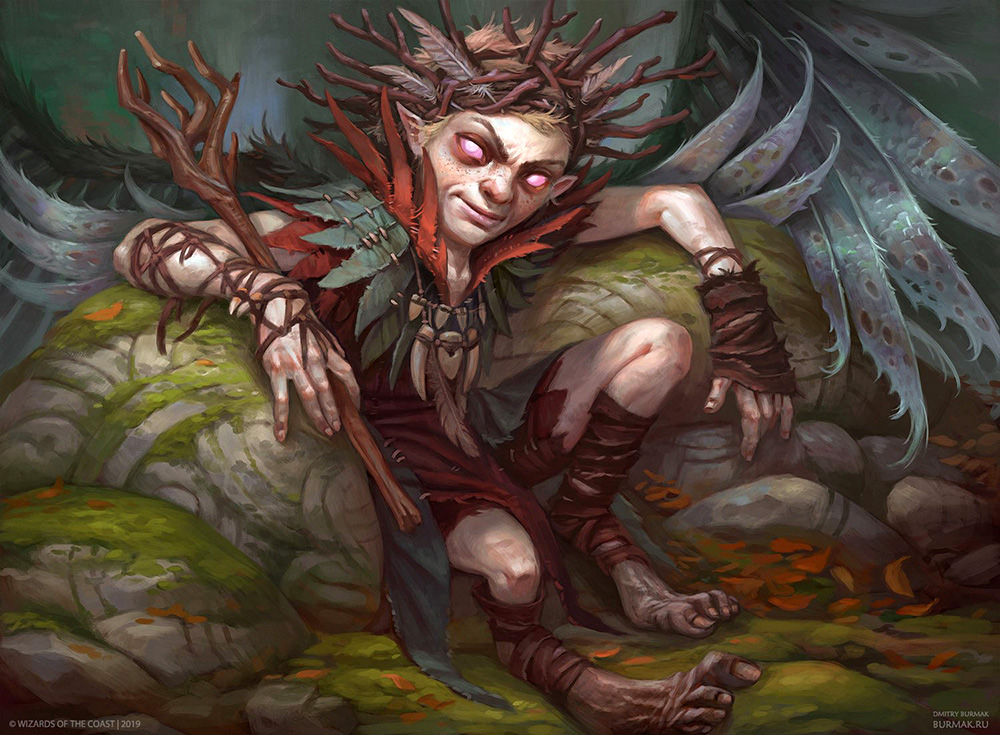
Rankle may be a prankster but his stats and abilities are no joke.
Mono-Black Aggro hits hard and fast with under costed creatures supported by cheap removal. Demonic Embrace gives you a repeatable way to grant your attackers flying plus extra power. The creatures at the top-end of your mana curve fly over ground-based blockers to close out the game.
What's good about this deck:
- You have many creatures that hit for a ton of damage and are hard to block. A Rotting Regisaur enchanted with Demonic Embrace is a two-turn kill if they don’t have a flying blocker.
- Your threats can keep coming back. You only need to damage your opponent to get back Gutterbones and you can discard dead cards or excess land to cast Demonic Embrace.
- Against control decks, Castle Locthwain ensures that you never run out of gas because they don’t pressure your life total.
How to play this deck effectively:
- Your best hand consists of a couple of one or two-mana creatures, Rotting Regisaur, and Demonic Embrace or a four-mana creature.
- Attack first with your Knight of the Ebon Legion before using your mana for other things. The threat of you activating the knight’s ability is usually enough to discourage your opponent from blocking.
- When racing other aggressive decks, Blacklance Paragon can swing the game in your favor. Use it to take out one of their big attacking creatures, or combine it with pumping Knight of the Ebon Legion to gain a big chunk of life.
- Don't run out Rotting Regisaur on Turn 3 if your opponent can stall it and you have other good cards. In that scenario, work on emptying your hand first so the discard drawback doesn't hurt you.
- Consider your options when you damage an opponent with Rankle, Master of Pranks. There are cases where you don’t want to use the draw option because it might let your opponent draw an answer.
Cards:
Deck
4 Gutterbones
4 Knight of the Ebon Legion
4 Serrated Scorpion
4 Blacklance Paragon
4 Rotting Regisaur
4 Spawn of Mayhem
3 Rankle, Master of Pranks
4 Demonic Embrace
4 Eliminate
1 Grasp of Darkness
4 Castle Locthwain
20 Swamp
5. Sultai Ramp
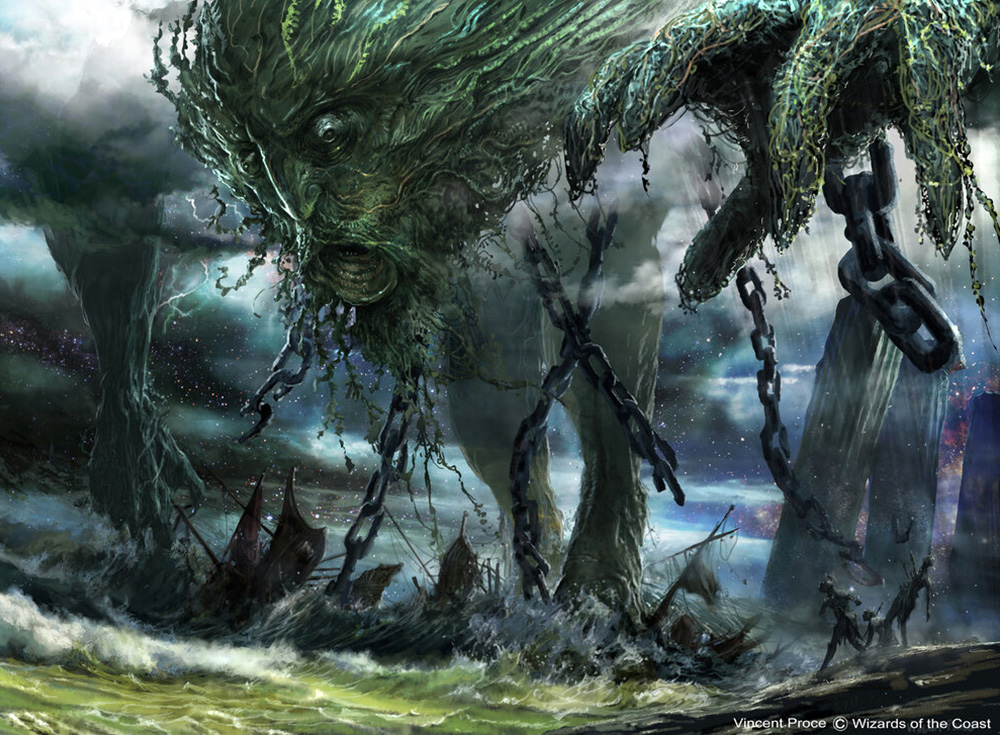
Poor Uro falls over because he wasn’t cast using his Escape ability.
Sultai Ramp uses cards like Uro, Titan of Nature’s Wrath and Cultivate to get ahead on lands. You can then use that extra mana to cast powerful pay off cards like Casualties of War, Hydroid Krasis, and planeswalkers. This deck uses all the powerful spells available in the black, blue, and green to overpower decks that don't pressure it in the first few turns.
What's good about this deck:
- Each card is individually powerful, which means you're not relying on a particular card to advance into a winning position.
- Thought Erasure lets you take their best card and allow you to make the correct plays based on the remaining cards they have.
- You can handle strategies on both ends of the spectrum. You have life gain and plenty of removal for aggressive decks, and effective cards against counterspells like Uro and Krasis.
How to play this deck effectively:
- Your best hand consists of Thought Seize, Uro, Nissa, and a payoff card like Krasis or Casualties of War.
- It goes without saying that as a ramp deck, making all your land drops is critical. Cast Krasis for a small amount if you have to and lean toward keeping lands instead of expensive spells during mulligans.
- When you have an Uro in the graveyard, look for ways to reach the required number of cards to pay for its Escape cost. Cycle Zagoth Triome if you already have plenty of lands or use Teferi, Master of Time's first ability even if you don't have a card in hand.
- You have cards that have strict color requirements so make sure to play the correct lands early. Paying two life for an untapped shock land can make you lose the game against aggro decks.
- Consider all your options when casting Hydroid Krasis. Sometimes it might be better to leave a few mana open for a chance to draw and immediately cast a cheap kill spell.
Cards:
Deck
4 Uro, Titan of Nature's Wrath
3 Hydroid Krasis
3 Nissa, Who Shakes the World
2 Teferi, Master of Time
2 Ugin, the Spirit Dragon
4 Thought Erasure
3 Cultivate
3 Extinction Event
3 Casualties of War
3 Eliminate
2 Heartless Act
4 Zagoth Triome
4 Breeding Pool
4 Overgrown Tomb
4 Fabled Passage
3 Watery Grave
1 Temple of Deceit
4 Forest
3 Island
1 Swamp
4. Mardu Winota
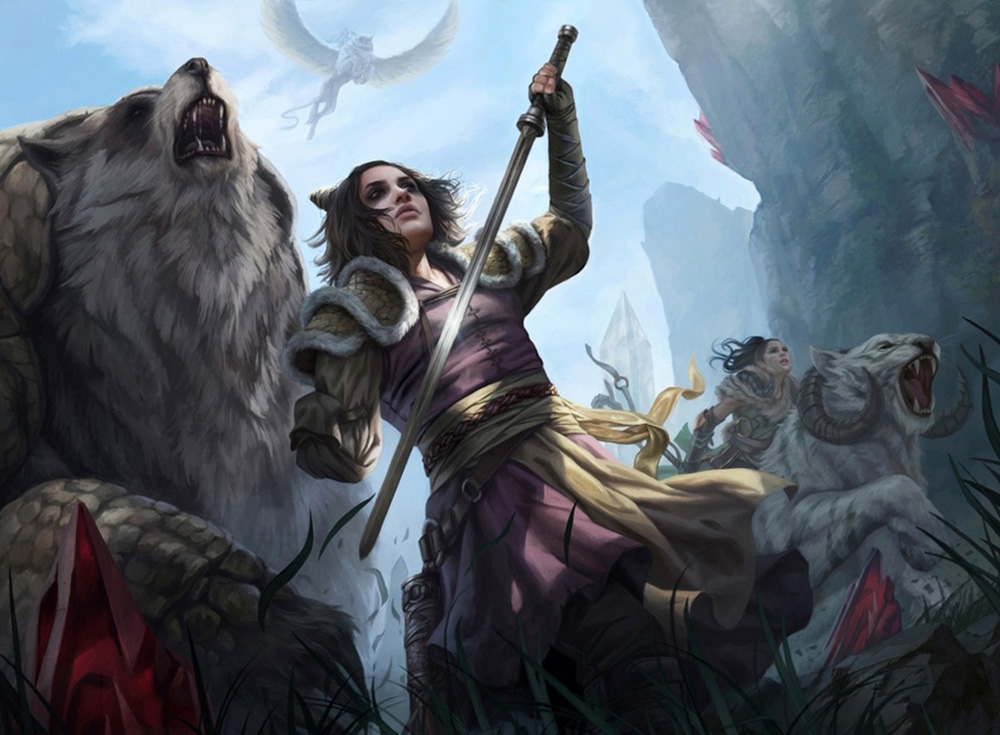
Winota lost her arm facing these creatures, but now she fights by their side.
Mardu Winota uses its namesake card to get a huge board advantage by attacking with non-Humans. All your early-game cards create a couple of bodies to maximize Winota's triggers. In case you don't draw her, you also have other cards that power up your creatures for a go-wide strategy.
What's good about this deck:
- You're almost unbeatable if you manage to get off several triggers from Winota. The various Humans you can grab give your board protection from sweepers or replacement bodies.
- Bant Ramp and Temur Reclamation's demise brought out other midrange decks that had a bad matchup against those two. You can prey on these slow decks and get easy wins.
- Unlike other builds, you can still play like a regular aggro deck if you don't find Winota. There's no danger of getting cards stuck in your hand because the mana curve stops at four.
How to play this deck effectively:
- Your best hand consists of several non-Human enablers and Winota or other pay off cards like Venerated Loxodon or Judith, the Scourge Diva.
- It’s critical to have some number of non-Human enablers in your opening hand. Keeping a hand without a payoff card is okay as long as you have good mana because that sets you up to draw the payoff later.
- Only use Selfless Savior to protect important creatures like Winota or Judith. If they use their removal at Selfless Savior, sacrifice it still to give another creature Indestructible.
- Always use Woe Strider's sacrifice ability whenever one of your creatures dies outside of combat. You don't have a lot of ways to draw cards, so Scrying into your good cards is important.
- When playing against decks with mass removal, sometimes it's better to go all-in. It's better to force them to have it than hold back and let them find one for sure.
Cards:
Deck
4 Selfless Savior
1 Knight of the Ebon Legion
3 Kitesail Freebooter
3 Lazotep Reaver
1 General's Enforcer
3 Woe Strider
3 Judith, the Scourge Diva
1 Tajic, Legion's Edge
4 Basri's Lieutenant
4 Winota, Joiner of Forces
4 Venerated Loxodon
4 Raise the Alarm
4 Savai Triome
4 Blood Crypt
4 Godless Shrine
4 Sacred Foundry
2 Fabled Passage
1 Temple of Silence
1 Temple of Triumph
1 Castle Embereth
2 Plains
1 Mountain
1 Swamp
3. Temur Adventures
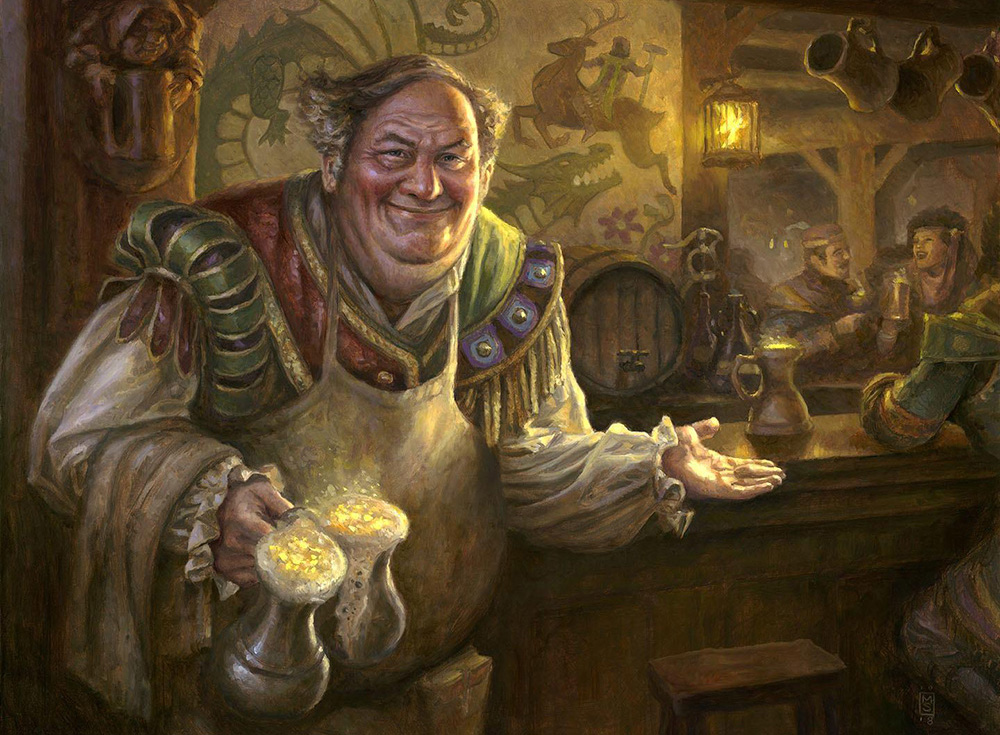
Free booze? No wonder adventurers love this innkeeper.
Temur Adventures is a midrange deck built around getting maximum value from the Adventure mechanic. Edgewall Innkeeper lets you draw extra cards while Lucky Clover copies your Adventure spells. It has the distinct advantage of giving you access to a sideboard in Best-of-One by casting the Adventure half of Fae of Wishes.
What's good about this deck:
- One of the most versatile decks because your Adventure creatures can be cast as spells first or as straight-up creatures if you need them. On top of that, you have access to silver bullets in your sideboard for any situation.
- You can generate an absurd amount of value if you manage to get several Edgewall Innkeeper and Lucky Clovers on the battlefield.
- The core cards in the deck are from Throne of Eldraine so your deck is rotation-proof. You can invest your wildcards in this deck and not have to worry about losing them in the upcoming rotation.
How to play this deck effectively:
- Even if you don't have Edgewall Innkeeper or Lucky Clover, you can keep most hands that have a good curve.
- Understand your role in a particular matchup and take that into account when using your cards. Against aggressive decks, casting Fae of Wishes on Turn 2 is correct because you need to play defense. Against control decks, casting your Brazen Borrower as a plain creature is fine because you need to attack your opponent's life total.
- The sideboard is currently set up to handle a wide variety of decks, but make sure to change it depending on what decks you're having trouble with the most.
- Take note that when you have Lucky Clover on the battlefield, the copy of the adventure spell resolves first. If you cast Brazen Borrower's Petty Theft when your opponent only has one nonland permanent, it will have no legal target by the time it resolves.
- Unless you don't have any better plays, hold off on casting Escape to the Wilds until mid to late game so you would be able to cast all the cards you get from it.
Cards:
Deck
4 Edgewall Innkeeper
4 Fae of Wishes
4 Brazen Borrower
4 Bonecrusher Giant
4 Lovestruck Beast
4 Beanstalk Giant
4 Lucky Clover
2 The Great Henge
3 Escape to the Wilds
4 Breeding Pool
4 Stomping Ground
2 Steam Vents
2 Temple of Abandon
1 Temple of Mystery
6 Forest
5 Island
3 Mountain
Sideboard
1 Tormod's Crypt
1 Grafdigger's Cage
1 Shadowspear
1 Unsummon
1 Redcap Melee
1 Aether Gust
1 Disdainful Stroke
1 Negate
1 Fling
1 Return to Nature
1 Storm's Wrath
1 Once and Future
1 Escape to the Wilds
1 Primal Might
1 Expansion // Explosion
2. Mono-Green Stompy
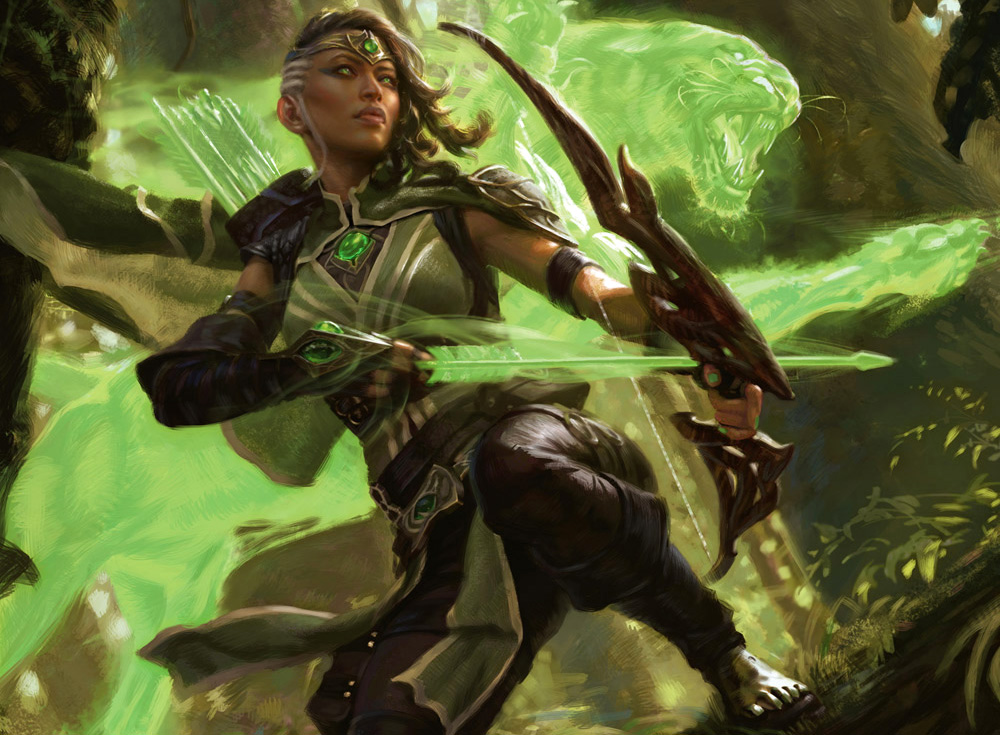
Viven aims right before capturing a wild poke- err... beast with her Arkbow.
Mono-Green Stompy is an aggressive deck that, much like Gruul Aggro, curves into the best available threats each turn. Being mono-color allows you to use powerful green cards that other decks can't hope to use like Yorvo, Lord of Garenbrig Viven, Arkbow Ranger. Scavenging Ooze lets you shut off Uro, Titan of Nature's Wrath or any strategy that uses the graveyard.
What's good about this deck:
- You have an advantage when facing other aggressive decks because your creatures are generally going to be bigger.
- It’s a competitive deck that’s simple and straightforward. You’re less likely to make mistakes when playing consecutive games in a tournament or spending hours ranking up the ladder.
- It’s much more affordable than multicolored decks because you don’t have to invest a lot of wild cards just for your mana base.
How to play this deck effectively:
- Your best hand consists of Pelt Collector, Barkhide Troll, Yorvo, and Vivien.
- Play Pelt Collector and Yorvo, Lord of Garenbrig early so they can grow fast as you’re playing other creatures.
- If you don’t have any other creatures you can play in your early turns, don’t hesitate to cast Stonecoil Serpent. Not utilizing your mana in the hopes of casting a bigger serpent later is a mistake.
- Always mutate Gemrazer on top when it has higher base stats than your target. Any +1/+1 counters on the original creature will still apply to it.
- Barkhide Troll is the best target for Vivien, Arkbow Ranger’s ability. It will be very difficult for your opponent to kill it as long as you leave mana open for its ability.
Cards:
Deck
4 Stonecoil Serpent
4 Pelt Collector
4 Scavenging Ooze
3 Barkhide Troll
4 Lovestruck Beast
2 Yorvo, Lord of Garenbrig
3 Questing Beast
2 Gemrazer
2 Vivien, Arkbow Ranger
2 The Great Henge
2 Primal Might
4 Ram Through
4 Castle Garenbrig
20 Forest
1. Mono-Red Aggro
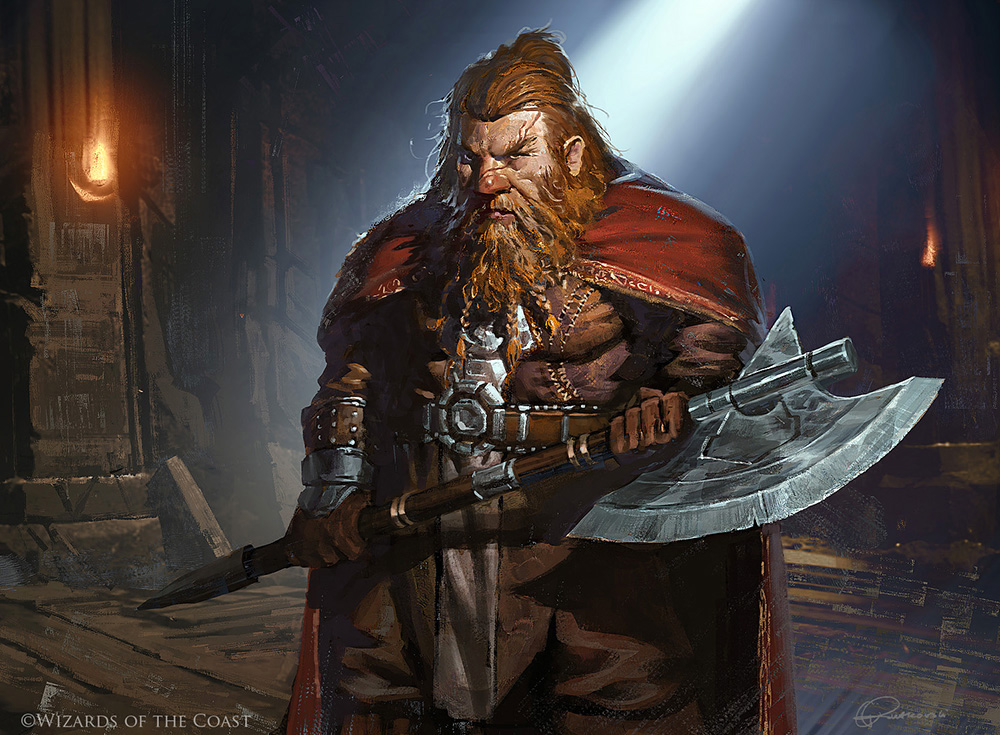
Torbran's had enough of being mistaken for that dwarf in Lord of the Rings.
Mono-Red Aggro is the ideal deck for anyone who wants to win as fast as possible. The strategy is simple: cast all your creatures and attack while removing threats out of the way. You have insurance from sweepers through Anax, Hardened in the Forge, and ways to increase damage like Torbran, Thrane of Red Fell.
What's good about this deck:
- It’s a good choice for players making their first deck competitive deck. It doesn't cost a lot of wildcards to build and you can replace most cards with budget alternatives.
- You can finish most games in only a few turns. That's great if you want a quick way to finish daily quests or progress up the ranking ladder.
- It's almost always viable in any metagame. Decks in Best-of-One can't afford to dedicate too many cards against Mono-Red because it will make their deck worse in other matchups.
How to play this deck effectively:
- Your best hand consists of a one-mana creature, Runaway Steam-Kin, Anax, and Torbran/Embercleave.
- Lead with Scorch Spitter instead of your other one-mana creatures with Haste. Playing your creatures in that order does more damage when you attack the following turn.
- Play your Runaway Steam-Kin early so it can gain counters fast. This lets you make explosive plays later when you convert those counters into mana.
- Don’t forget that Tin Street Dodger is also a Rogue. If you exiled some cards with Robber of the Rich earlier, attacking with this goblin also lets you cast those cards.
- If you already have an Anax on the battlefield, it's okay to cast your extra copy because you will get four Satyrs once it dies to the Legend rule. Those tokens can do a lot of damage when paired with Torbran or Castle Embereth.
Cards:
Deck
4 Scorch Spitter
4 Fervent Champion
2 Tin Street Dodger
4 Runaway Steam-Kin
4 Robber of the Rich
1 Subira, Tulzidi Caravanner
4 Anax, Hardened in the Forge
4 Bonecrusher Giant
3 Torbran, Thane of Red Fell
4 Embercleave
2 Shock
2 Fire Prophecy
4 Castle Embereth
18 Mountain
You may also be interested in:
- The 10 Best MTG: Arena Decks
- MTG Arena Guide, Tips and Tricks
- Best Ways to Get Wildcards in MTG Arena
- [Top 7] MTG Arena Best Artifact Decks That Wreck Hard!
- [TOP 5] MTG Arena Best Control Decks
- [Top 10] MTG Arena Best Historic Decks That Wreck Hard!
- MTG Arena Best Packs To Buy – A Guide for Beginners and Intermediate Players
- MTG Arena: Best Ways to Get Cards
- Top 15 Best MTG Arena Mythic Rares
- MTG Arena Ranking System Explained
- The Best Singleton Decks in MTG Arena
- [Top 5] Best MTG Arena Aggro Decks
- [Top 5] MTG Arena Best Angel Decks
- [Top 10] MTG Arena Best White Decks
- [Top 10] MTG Arena Best Black Decks

